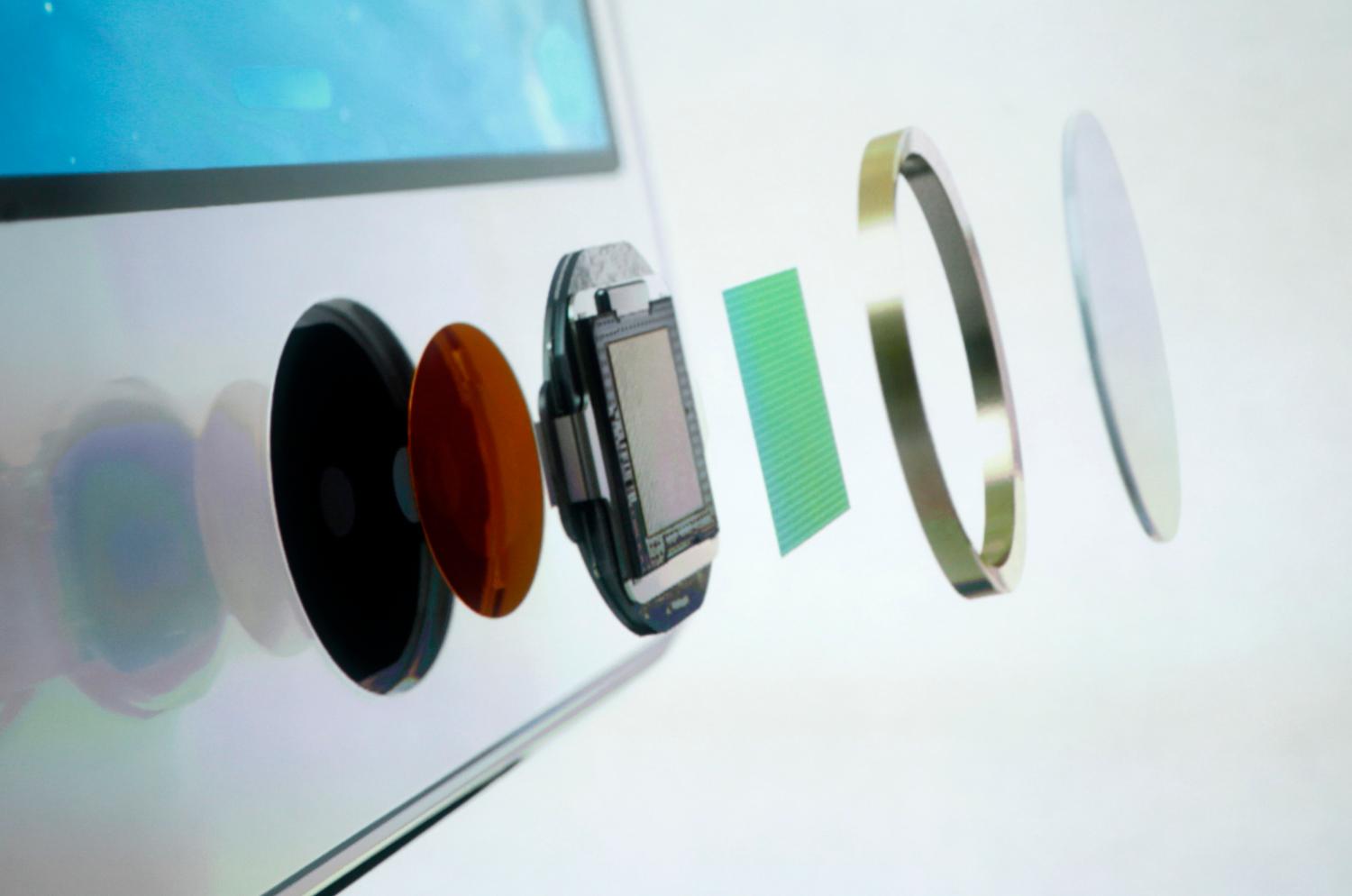This post originally appeared on the Center for Technology Innovation’s TechTank blog.
Universities cash handsome awards on infringement cases
This October, a jury found Apple Inc. guilty of infringing a patent of the University of Wisconsin-Madison (UW) and ordered the tech giant to pay $234 million. The university scored a big financial victory, but this hardly meant any gain for the good name of the university.
The plaintiffs argued successfully in court that Apple infringed their 1998 patent on a predictor circuit that greatly improved the efficiency of microchips used in the popular iPhone 5s, 6, and 6 Plus. Apple first responded by challenging the validity of the patent, but the US Patent and Trademark Office ruled in favor of the university. Apple plans to appeal, but the appellate court is not likely to reverse the lower court’s decision.
This is not the first time this university has asserted its patents rights (UW sued Intel in 2008 for this exact same patent and reportedly settled for $110 million). Nor is this the first time universities in general have taken infringers to court. Prominent cases in recent memory include Boston University, which sued several companies for infringement of a patent for blue light-emitting diodes and settled out of court with most of them, and Carnegie Mellon, who was awarded $237 million by the federal appellate court on its infringement suit against Marvell, a semiconductor company, for its use of an enhanced detector of data in hard drives called Kavcic detectors.
Means not always aligned with aims in patent law
When university patented inventions emerge from federal research grants, infringement suits test the accepted interpretations of current patent law.
The Bayh-Dole Act of 1980 extended patent law and gave small-business and universities the right to take title to patents from federal research grants—later it was amended to extend the right to all federal grantees regardless of size. The ostensible aim of this act is to “to promote the utilization of inventions arising from federally supported research or development.” Under the law, a condition for universities (or any other government research performers) to keep their exclusive rights on those patents is that they or their licensees take “effective steps to achieve practical application” of those patents. Bayh-Dole was not designed to create a new source of revenue for universities. If companies are effectively using university technologies, Bayh-Dole’s purpose is served without need of patents.
To understand this point, consider a counterfactual: What if the text of Bayh-Dole had been originally composed to grant a conditional right to patents for federal research grantees? The condition could be stated like this: “This policy seeks to promote the commercialization of federally funded research and to this end it will use the patent system. Grantees may take title to patents if and only if other mechanisms for disseminating and developing those inventions into useful applications prove unsuccessful.” Under this imagined text, the universities could still take title to patents on their inventions if they or the U.S. Patent and Trademark Office were not aware that the technologies were being used in manufactures.
But no court would find their infringement claim meritorious if the accused companies could demonstrate that, absent of willful infringement, they had in fact used the technologies covered by university patents in their commercial products. In this case, other mechanisms for disseminating and developing the technologies would have proven successful indeed. The reality that Bayh-Dole did not mandate such a contingent assignation of rights creates a contradiction between its aims and the means chosen to advance those aims for the subset of patents that were already in use by industry.
I should remark that UW’s predictor circuit resulted from grants from NSF and DARPA and there is no indication that the university exercised its patent rights with any less vigor just because the original research was funded by public funds. In fact, it is fully expected from universities to aggressively assert their patent rights regardless of the source of funding for the original research.
You can have an answer for every question and still lose the debate
It is this litigious attitude that puts off many observers. While the law may very well allow universities to be litigious, universities could still refuse to exercise their rights under circumstances in which those rights are not easily reconciled with the public mission of the university.
Universities administrators, tech transfer personnel, and particularly the legal teams winning infringement cases have legitimate reasons to wonder why universities are publicly scorned. After all, they are acting within the law and simply protecting their patent rights; they are doing what any rational person would do. They may be really surprised when critics accuse universities of becoming allies of patent trolls, or of aiding and abetting their actions. Such accusations are unwarranted. Trolls are truants; the universities are venerable institutions. Patent trolls would exploit the ambiguities of patent law and the burdens of due process to their own benefit and to the detriment of truly productive businesses and persons. In stark contrast, universities are long established partners of democracy, respected beyond ideological divides for their abundant contributions to society.
The critics may not be fully considering the intricacies of patent law. Or they may forget that universities are in need of additional revenue—higher education has not seen public financial support increase in recent years, with federal grants roughly stagnated and state funding falling drastically in some states. Critics may also ignore that revenues collected from licensing of patents, favorable court rulings, and out-of-court settlements, are to a large extent (usually two thirds of the total) plugged back into the research enterprise.
University attorneys may have an answer for every point that critics raise, but the overall concern of critics should not be dismissed outright. Given that many if not most university patents can be traced back to research funded by tax dollars, there is a legitimate reason for observers to expect universities to manage their patents with a degree of restraint. There is also a legitimate reason for public disappointment when universities do not seem to endeavor to balance the tensions between their rights and duties.
Substantive steps to improve the universities’ public image
Universities can become more responsive to public expectations about their character not only by promoting their good work, but also by taking substantive steps to correct misperceptions.
First, when universities discover a case of proven infringement, they should take companies to court as a measure of last resort. If a particular company refuses to negotiate in good faith and an infringement case ends up in court, the universities should be prepared to demonstrate to the court of public opinion that they have tried, with sufficient insistence and time, to negotiate a license and even made concessions in pricing the license. In the case of the predictor circuit patent, it seems that the University of Wisconsin-Madison tried to license the technology and Apple refused, but the university would be in a much better position if it could demonstrate that the licensing deals offered to Apple would have turned to be far less expensive for the tech company.
Second, universities would be well advised not to join any efforts to lobby Congress for stronger patent protection. At least two reasons substantiate this suggestion. First, as a matter of principle, the dogmatic belief that without patents there is no innovation is wrong. Second, as a matter of material interest, universities as a group do not have a financial interest in patenting. It’s worth elaborating these points a bit more.
Neither historians nor social science researchers have settled the question about the net effects of patents on innovation. While there is evidence of social benefits from patent-based innovation, there is also evidence of social costs associated with patent-monopolies, and even more evidence of momentous innovations that required no patents. What’s more, the net social benefit varies across industries and over time. Research shows economic areas in which patents do spur innovation and economic sectors where it actually hinders them. This research explains, for instance, why some computer and Internet giants lobby Congress in the opposite direction to the biotech and big pharma industries. Rigorous industrial surveys of the 1980s and 1990s found that companies in most economic sectors did not use patents as their primary tool to protect their R&D investments.
Yet patenting has increased rapidly over the past four decades. This increase includes industries that once were uninterested in patents. Economic analyses have shown that this new patenting is a business strategy against patent litigation. Companies are building patent portfolios as a defensive strategy, not because they are innovating more. The university’s public position on patent policy should acknowledge that the debate on the impact of patents on innovation is not settled and that this impact cannot be observed in the aggregate, but must be considered in the context of each specific economic sector, industry, or even market. From this vantage point, universities could then turn up or down the intensity with which they negotiate licenses and pursue compensation for infringement. Universities would better assert their commitment to their public mission if they compute on a case by case basis the balance between social benefits and costs for each of its controversial patents.
As to the material interest in patents, it is understandable that some patent attorneys or the biotech lobby publicly espouse the dogma of patents, that there is no innovation without patents. After all, their livelihood depends on it. However, research universities as a group do not have any significant financial interest in stronger patent protection. As I have shown in a previous Brookings paper, the vast majority of research universities earn very little from their patent portfolios and about 87% of tech transfer offices operate in the red. Universities as a group receive so little income from licensing and asserting their patents relative to the generous federal support (below 3%), that if the federal government were to declare that grant reviewers should give a preference to universities that do not patent, all research universities would stop the practice at once. It is true that a few universities (like the University of Wisconsin-Madison) raise significant revenue from their patent portfolio, and they will continue to do so regardless of public protestations. But the majority of universities do not have a material interest in patenting.
Time to get it right on anti-troll legislation
Last year, the House of Representative passed legislation closing loopholes and introducing disincentives for patent trolls. Just as mirror legislation was about to be considered in the Senate, Sen. Patrick Leahy withdrew it from the Judiciary Committee. It was reported that Sen. Harry Reid forced the hand of Mr. Leahy to kill the bill in committee. In the public sphere, the shrewd lobbying efforts to derail the bill were perceived to be pro-troll interests. The lobbying came from pharmaceutical companies, biotech companies, patent attorneys, and, to the surprise of everyone, universities. Little wonder that critics overreacted and suggested universities were in partnership with trolls: even if they were wrong, these accusations stung.
University associations took that position out of a sincere belief in the dogma of patents and out of fear that the proposed anti-troll legislation limited the universities’ ability to sue patent infringers. However, their convictions stand on shaky ground and only a few universities sue for infringement. In taking that policy position, university associations are representing neither the interests nor the beliefs of the vast majority of universities.
A reversal of that position is not only possible, but would be timely. When anti-troll legislation is again introduced in Congress, universities should distance themselves from efforts to protect the policy status quo that so benefits patent trolls. It is not altogether improbable that Congress sees fit to exempt universities from some of the requirements that the law would impose. University associations could show Congress the merit of such exemptions in consideration of the universities’ constant and significant contributions to states, regions, and the nation. However, no such concessions could ever be expected if the universities continue to place themselves in the company of those who profit from patent management.
No asset is more valuable for universities than their prestige. It is the ample recognition of their value in society that guarantees tax dollars will continue to flow into universities. While acting legally to protect their patent rights, universities are nevertheless toying with their own legitimacy. Let those universities that stand to gain from litigation act in their self-interest, but do not let them speak for all universities. When university associations advocate for stronger patent protection, they do the majority of universities a disservice. These associations should better represent the interests of all their members by advocating a more neutral position about patent reform, by publicly praising universities’ restraint on patent litigation, and by promoting a culture and readiness in technology transfer offices to appraise each patent not by its market value but by its social value. At the same time, the majority of universities that obtain neither private nor social benefits from patenting should press their political representatives to adopt a more balanced approach to policy advocacy, lest they squander the reputation of the entire university system.
Editor’s Note: The post was corrected to state that UW’s predictor circuit did originate from federally funded research.
The Brookings Institution is committed to quality, independence, and impact.
We are supported by a diverse array of funders. In line with our values and policies, each Brookings publication represents the sole views of its author(s).





